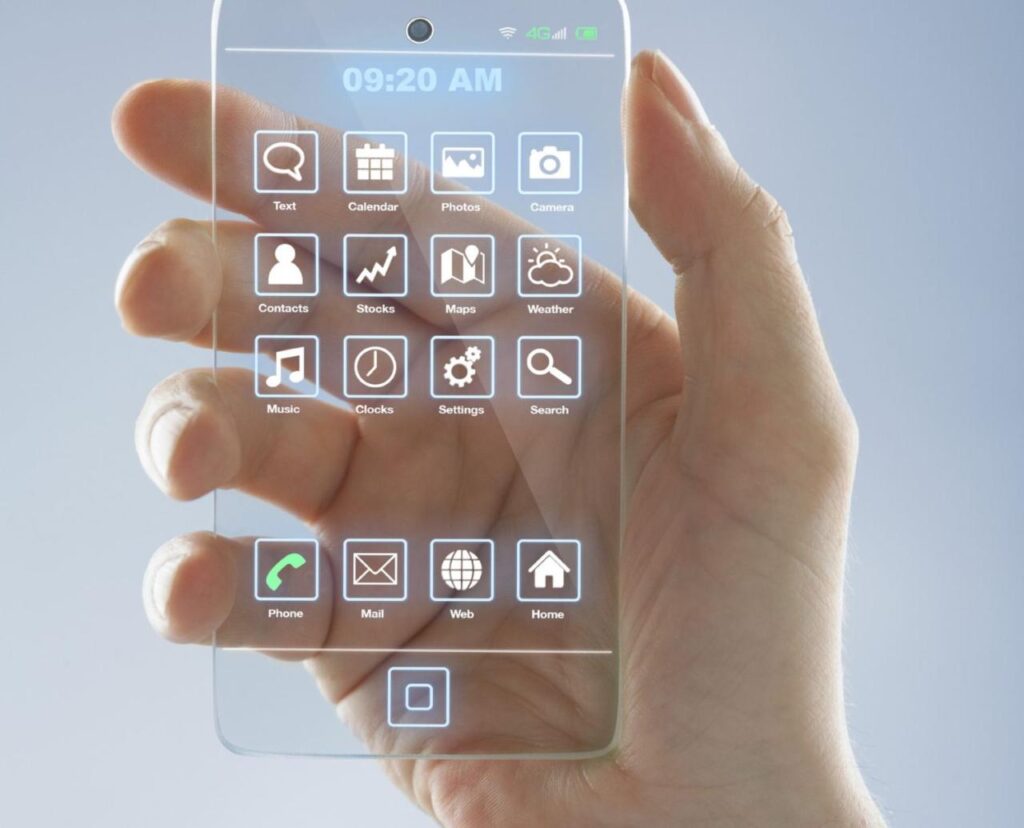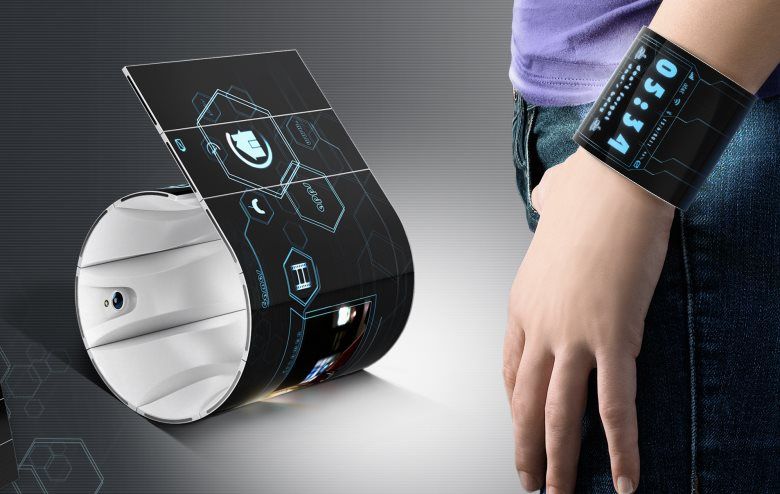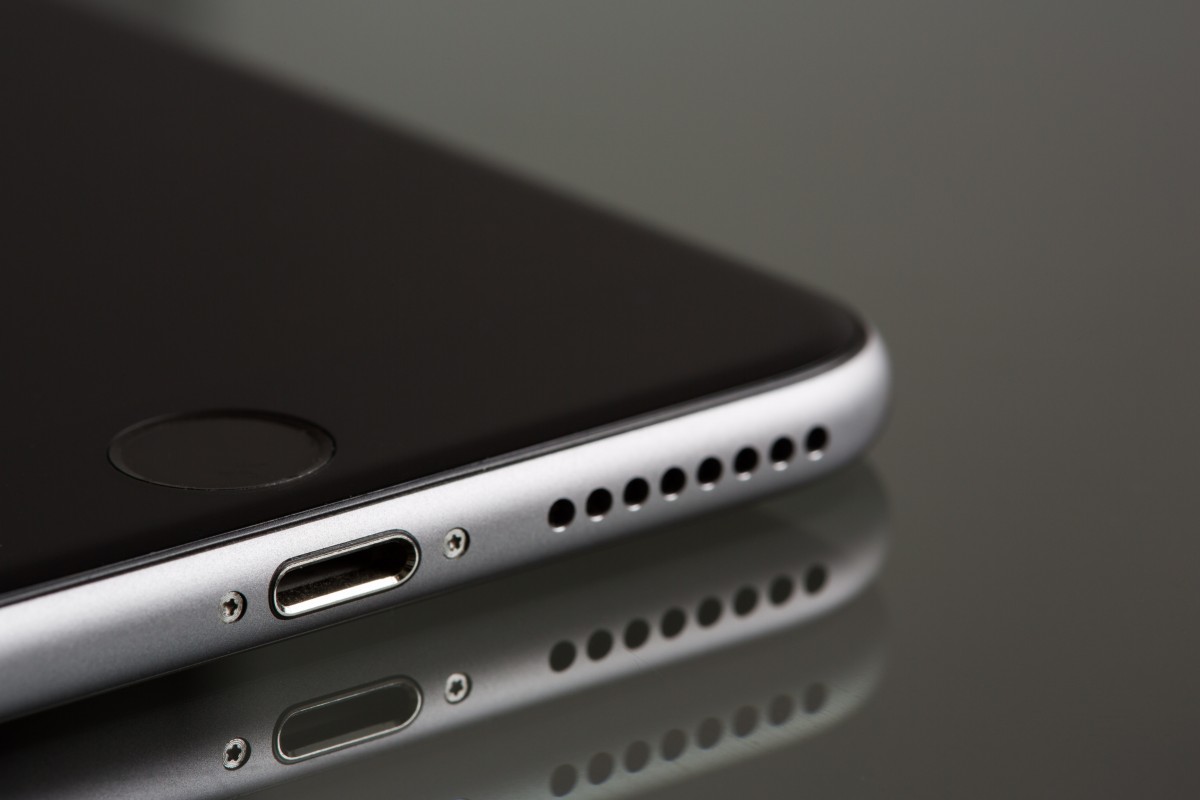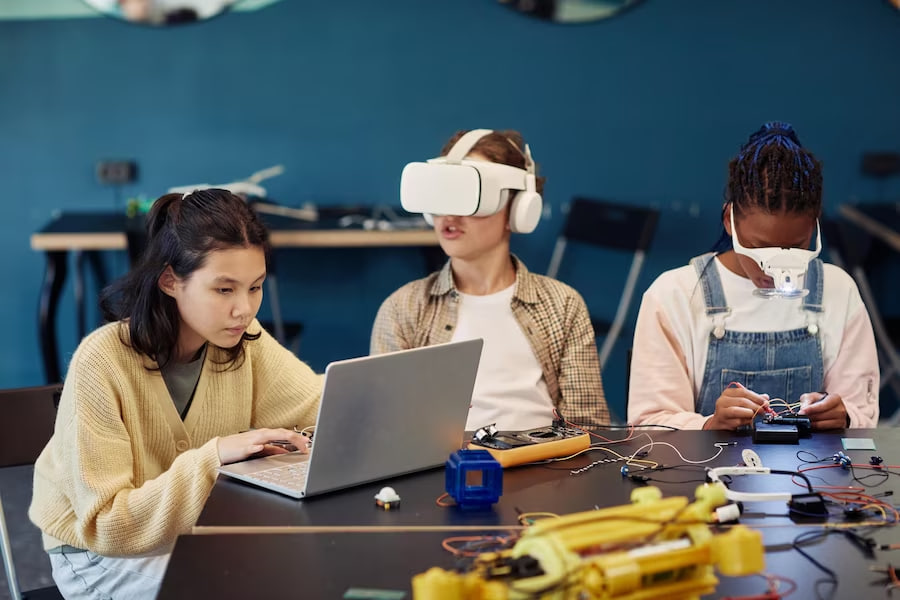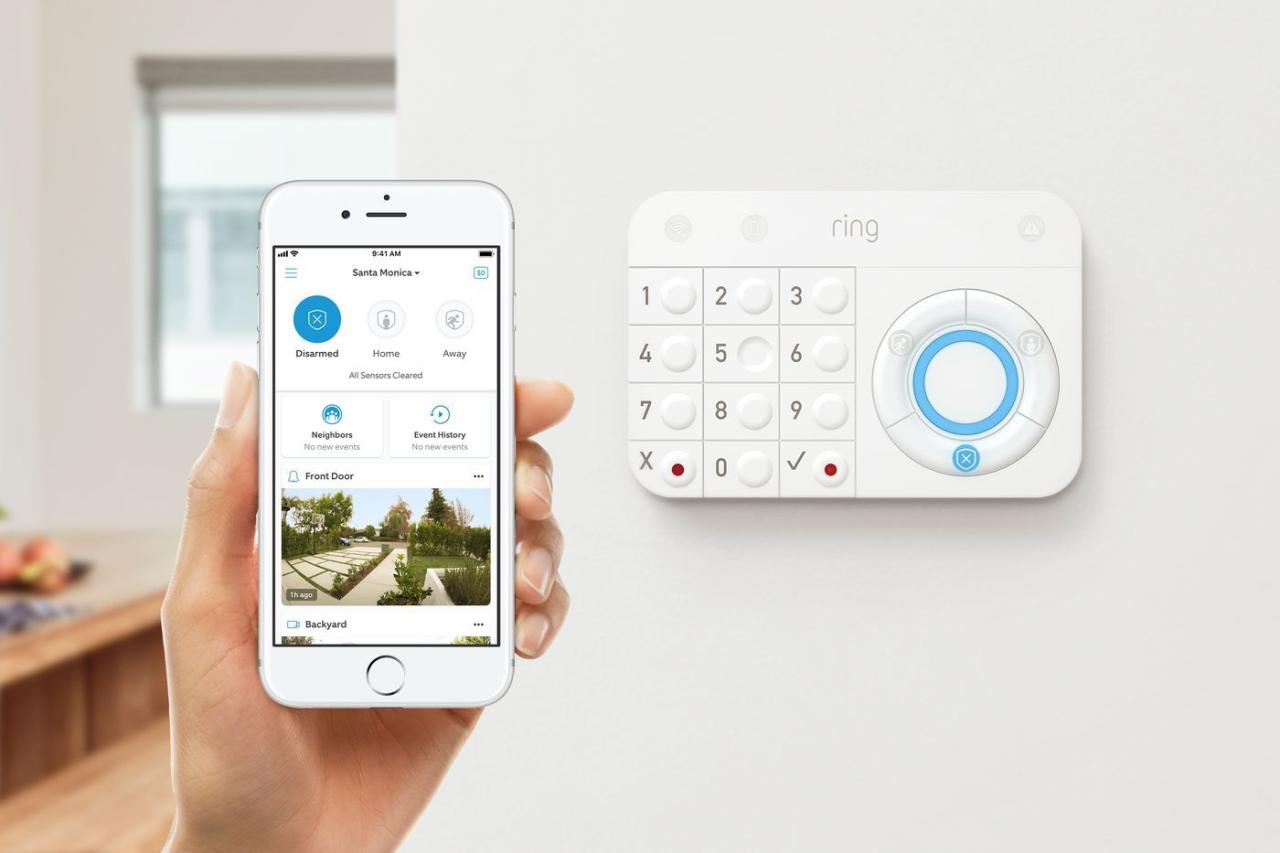The Ever-Evolving Mobile Landscape
The mobile phone, once a mere communication device, has transcended its initial purpose to become an indispensable extension of ourselves. From enabling instant global connectivity to serving as a personal entertainment hub, a powerful productivity tool, and even a critical health monitor, the mobile device sits at the epicenter of our digital lives. The pace of innovation in this sector is relentless, with each year bringing forth advancements that redefine what’s possible and fundamentally alter how we interact with the world. This comprehensive article delves into the latest and most impactful innovations in mobile technology, exploring the underlying advancements that drive them, their transformative applications across various aspects of our lives, and the profound societal shifts they engender. We’ll also cast an eye toward the horizon, examining emerging trends that promise to shape the next generation of mobile experiences.
The Core Drivers of Mobile Evolution: Beyond Just Faster Chips
While raw processing power remains a crucial element, the latest mobile innovations are fueled by a synergistic interplay of advancements across several key technological domains. It’s no longer just about gigahertz and gigabytes; it’s about intelligence, efficiency, and seamless integration.
A. Artificial Intelligence (AI) and Machine Learning (ML) Integration
The most significant paradigm shift in modern mobile technology is the deep integration of Artificial Intelligence (AI) and Machine Learning (ML) directly into the device hardware and software. This “on-device AI” or “edge AI” enables smartphones to perform complex cognitive tasks without constant reliance on cloud servers, leading to enhanced privacy, speed, and efficiency.
- Improved Photography and Videography: AI algorithms are now indispensable for mobile camera systems. They power features like scene recognition (identifying subjects and adjusting settings accordingly), computational photography (combining multiple exposures for better dynamic range, like HDR), portrait mode (artistically blurring backgrounds), and advanced noise reduction. AI also enables features like “magic eraser” for object removal or intelligent video stabilization.
- Personalized User Experience: AI learns user habits, preferences, and even emotional states. This allows for highly personalized experiences, such as predictive text that anticipates your next word, intelligent content recommendations, adaptive battery management that learns your usage patterns to optimize power, and even dynamic screen adjustments based on ambient light.
- Enhanced Voice Assistants: Modern voice assistants are powered by sophisticated Natural Language Processing (NLP) and ML models. They not only understand complex commands but can also engage in more natural, conversational interactions, set context, and even differentiate between users’ voices.
- Advanced Security and Authentication: AI plays a critical role in robust mobile security. Facial recognition systems (like Face ID) and fingerprint scanners utilize AI to create highly secure biometric authentication. AI can also detect anomalous behavior on the device, flagging potential malware or unauthorized access attempts.
- Resource Optimization: AI algorithms efficiently manage the phone’s resources – CPU, GPU, RAM, and battery – to ensure smooth performance, prevent overheating, and extend battery life, adapting to the user’s real-time needs.
B. Display Technologies: Visual Feast and Interactive Futures
The screen is the primary interface, and mobile display technology continues to push boundaries in terms of visual fidelity, flexibility, and interactivity.
- Foldable and Rollable Displays: The advent of foldable screens has introduced a new form factor, allowing devices to transform from a compact phone to a larger tablet. Companies like Samsung (Galaxy Fold/Flip) and Huawei have pioneered this technology, offering enhanced multitasking and media consumption. The next frontier is rollable displays, which can expand or retract, promising even greater versatility. These innovations rely on flexible OLED panels and sophisticated hinge mechanisms.
- High Refresh Rates (90Hz, 120Hz, 144Hz+): Once a niche feature for gaming monitors, high refresh rates are now standard on flagship smartphones. They provide a significantly smoother scrolling experience, more fluid animations, and a more responsive feel, particularly noticeable in gaming and video playback.
- Under-Display Cameras (UDC): To achieve truly bezel-less displays without notches or punch-holes, manufacturers are developing under-display camera technology. While still in its early stages, UDC aims to hide the front-facing camera beneath the active display area, maintaining an uninterrupted screen experience.
- Improved Brightness and Color Accuracy: Modern mobile displays, primarily OLED and advanced LCDs, offer incredible peak brightness, allowing for excellent visibility even in direct sunlight, and wide color gamuts (like DCI-P3) for vibrant, lifelike colors, crucial for media consumption and content creation.
C. Connectivity Advancements: The Speed of Information
The ability to connect rapidly and reliably is fundamental to the mobile experience, and advancements in wireless technologies are continuously expanding capabilities.
- 5G Connectivity: The rollout of 5G (fifth-generation) wireless technology is perhaps the most significant connectivity innovation. 5G offers dramatically higher speeds (up to 10-100 times faster than 4G), ultra-low latency, and greater capacity, enabling new applications like real-time cloud gaming, enhanced augmented reality (AR), and more reliable streaming of high-resolution content. Its impact extends beyond individual devices to enable a truly interconnected ecosystem.
- Wi-Fi 6/6E/7: Alongside cellular advancements, Wi-Fi standards are also evolving. Wi-Fi 6 (802.11ax) offers better performance in crowded network environments, higher speeds, and improved battery life for connected devices. Wi-Fi 6E extends this to the 6GHz band for even less interference, and Wi-Fi 7 (802.11be), or Extremely High Throughput (EHT), promises even greater speeds and lower latency.
- Satellite Connectivity: Emerging in some flagship devices, satellite connectivity offers the ability to send emergency messages or even limited data in areas without traditional cellular coverage. This is a crucial safety feature for adventurers and a step towards ubiquitous communication.
- Ultra-Wideband (UWB): UWB technology enables highly precise spatial awareness. It’s used for accurate indoor navigation, secure digital car keys, finding lost items with pinpoint accuracy (like Apple’s AirTag), and rapid, directional file transfers.
D. Battery Technology and Charging Solutions: Powering the Experience
As devices become more powerful and displays more demanding, battery life remains a critical concern. Innovations are focusing on both capacity and charging efficiency.
- Faster Wired Charging: Proprietary fast-charging technologies (e.g., Warp Charge, SuperVOOC, Quick Charge) can now fully charge a smartphone in under an hour, or even just 15-30 minutes for a significant charge. This is achieved through higher wattages and optimized battery management systems.
- Improved Wireless Charging: Wireless charging (Qi standard) continues to evolve, offering faster speeds and greater efficiency. Reverse wireless charging, allowing phones to charge other devices like earbuds, is also becoming more common.
- Battery Management AI: AI plays a crucial role in optimizing battery performance by learning usage patterns and intelligently managing power consumption for background apps, display brightness, and processor frequency.
- Next-Generation Battery Chemistry: While still largely in R&D, advancements in battery chemistry, such as solid-state batteries or silicon-anode batteries, promise significantly higher energy density, meaning more power in a smaller footprint, and potentially longer lifespans.
E. Advanced Sensors and Haptics: Beyond Simple Touch
Modern mobile devices are packed with an array of sophisticated sensors that enable richer interactions and collect vast amounts of contextual data. Haptic feedback is also becoming more nuanced.
- LiDAR Scanners: Found in some high-end smartphones, LiDAR (Light Detection and Ranging) scanners create accurate 3D maps of environments. This significantly enhances Augmented Reality (AR) experiences, enabling more precise object placement and interaction, and improves low-light autofocus for cameras.
- Improved Biometric Sensors: Beyond standard fingerprint and facial recognition, some devices are exploring in-display ultrasonic fingerprint sensors for greater security and convenience.
- Enhanced Haptic Feedback: High-quality haptic motors provide subtle, precise vibrations that mimic textures, button presses, and even the feeling of rain, greatly enhancing the tactile user experience in games, notifications, and typing.
- Environmental Sensors: Some devices include sensors for air quality, temperature, or even UV levels, providing more contextual information to the user.
Transformative Applications: Where Innovations Meet Daily Life
The cumulative effect of these technological advancements is a dramatic expansion in how mobile devices are used, blurring the lines between our physical and digital worlds.
A. Augmented Reality (AR) and Virtual Reality (VR) Experiences
Mobile devices are becoming increasingly capable platforms for immersive AR and VR experiences, leveraging their powerful processors, high-resolution displays, and advanced sensors.
- AR in Gaming and Entertainment: Mobile AR games (like Pokémon GO) have demonstrated mass appeal. Newer applications include AR filters for social media, virtual try-ons for clothing, and interactive educational content that overlays digital information onto the real world.
- AR for Productivity and Navigation: AR can transform everyday tasks, from visualizing furniture in your home before purchase to providing intuitive navigation overlays that guide you with virtual arrows on real streets.
- Mobile VR: While standalone VR headsets are prevalent, smartphones can still serve as portable VR viewers for casual experiences, enabling access to 360-degree videos and simple VR games. The future might see more tightly integrated mobile VR solutions.
B. Health and Wellness Monitoring: A Pocket-Sized Doctor
Mobile devices are evolving into sophisticated personal health companions, enabling unprecedented levels of self-monitoring and preventative care.
- Advanced Health Tracking: Beyond simple step counting, modern smartphones and wearables can monitor heart rate variability, blood oxygen levels (SpO2), skin temperature, and even perform basic electrocardiograms (ECGs).
- Sleep Analysis: Sophisticated algorithms analyze sleep patterns, providing insights into sleep quality, disturbances, and suggesting improvements.
- Mental Wellness Apps: AI-powered apps offer guided meditation, stress management tools, and even preliminary mental health assessments.
- Integration with Medical Devices: Mobile apps can now seamlessly connect with external medical devices (e.g., glucose meters, blood pressure cuffs), allowing users and healthcare providers to track chronic conditions more effectively.
C. Mobile Gaming: Console-Quality Experiences on the Go
The surge in mobile processing power, high refresh rate displays, and advanced cooling systems has transformed mobile gaming into a powerhouse industry, rivaling traditional console and PC gaming in terms of visual fidelity and complexity.
- AAA Game Titles: Many graphically demanding console-quality games are now available on mobile platforms, often optimized with advanced graphics settings.
- Cloud Gaming Services: 5G and Wi-Fi 6 enable seamless streaming of console and PC games from the cloud directly to mobile devices, bypassing the need for powerful on-device hardware for rendering.
- Esports on Mobile: Mobile gaming has spawned its own vibrant esports scene, with competitive tournaments for popular titles drawing massive viewership.
- Dedicated Gaming Phones: Some manufacturers produce phones specifically designed for gaming, featuring enhanced cooling, dedicated gaming modes, and customizable physical triggers.
D. Productivity and Creativity: The Mobile Workstation
Smartphones and tablets are increasingly capable of handling tasks traditionally reserved for laptops or desktops, becoming versatile tools for professionals and creatives.
- Desktop-Class Productivity: With powerful processors, external display support, and optimized software (e.g., DeX for Samsung, Continuity for Apple), mobile devices can power a desktop-like experience when connected to a monitor, keyboard, and mouse.
- Professional Content Creation: High-resolution cameras, advanced video editing apps, and powerful photo editors allow users to capture, edit, and publish professional-quality content directly from their mobile device.
- Enhanced Multitasking: Features like split-screen multitasking, floating windows, and app pairs enable users to manage multiple applications simultaneously, boosting productivity.
- Stylus Support: The integration of styluses (like the Apple Pencil or S Pen) transforms tablets and larger phones into digital notebooks for drawing, note-taking, and detailed editing.
E. Financial Transactions and Digital Identity: Secure and Seamless
Mobile devices are central to the digital economy, serving as secure wallets and increasingly as verifiable forms of digital identity.
- Mobile Payments (NFC and QR Codes): Near Field Communication (NFC) payments (e.g., Apple Pay, Google Pay) allow for contactless transactions, while QR code payments are prevalent in many regions. These systems leverage the device’s security features for authentication.
- Digital Banking and Investments: Banking apps offer comprehensive financial management, while mobile trading platforms provide instant access to stock markets and cryptocurrencies.
- Digital Wallets for IDs: Efforts are underway to integrate digital driver’s licenses, passports, and other forms of identification directly into secure mobile wallets, leveraging biometric authentication for verification.
Reshaping Our World
The pervasive nature and continuous innovation of mobile devices have profound and multifaceted impacts on society, influencing everything from communication patterns to economic structures and individual well-being.
A. Connectivity and Global Access
Mobile devices have dramatically increased global connectivity, bridging geographical divides and empowering billions with access to information, education, and economic opportunities, particularly in developing nations. They are often the primary, if not sole, means of internet access for many.
B. Economic Transformation and Digital Entrepreneurship
The mobile ecosystem has spurred an immense wave of economic activity. The app economy alone generates trillions, creating millions of jobs for developers, designers, and marketers. Mobile platforms enable digital entrepreneurship, allowing individuals and small businesses to reach global markets with minimal overhead. The gig economy is heavily reliant on mobile apps, connecting service providers with consumers.
C. Evolution of Communication and Social Interaction
While enhancing instant communication, mobile devices have also reshaped social interaction. The prevalence of messaging apps, social media, and video calls has altered how we connect with friends, family, and colleagues. There’s an ongoing debate about the balance between digital connection and face-to-face interaction, and the psychological effects of constant connectivity.
D. Data Privacy and Security Challenges
The vast amount of personal data collected and processed by mobile devices raises significant concerns about privacy and data security. Companies are under increasing scrutiny to protect user data from breaches and misuse. Users also face the challenge of understanding complex privacy policies and managing their digital footprint. Regulatory frameworks like GDPR and CCPA are attempts to address these challenges.
E. Digital Divide and Accessibility
Despite widespread adoption, a “digital divide” persists, where access to advanced mobile technology and reliable internet remains unevenly distributed globally and even within countries. Ensuring equitable access and designing devices and software that are accessible to individuals with disabilities are ongoing challenges and crucial areas for innovation.
Emerging Mobile Technologies and Trends
The future of mobile innovation promises even more seamless integration, advanced intelligence, and novel form factors. Several key trends are on the horizon.
A. Greater Emphasis on Sustainability and Repairability
As consumer awareness of environmental impact grows, there will be increasing pressure on manufacturers to design mobile devices that are more sustainable. This includes using recycled materials, offering easier repairability (modular designs, readily available parts), and reducing electronic waste. Software updates lasting for more years will also contribute to sustainability.
B. Pervasive AI and Contextual Computing
AI will become even more deeply embedded in every aspect of the mobile experience. Future devices will anticipate user needs with greater accuracy, provide proactive assistance, and seamlessly adapt to context (location, time, activity, emotional state). This will move towards a truly “ambient intelligence” where technology fades into the background, responding intuitively to our environment.
C. Advanced Biometrics and Passwordless Authentication
Beyond fingerprints and facial recognition, future mobile devices may incorporate more advanced biometrics like iris scanning, vein patterns, or even behavioral biometrics (how you type or hold your phone) for even more secure and seamless authentication. The goal is a truly passwordless future, where your identity is your key.
D. Further Evolution of Foldable and Rollable Designs
While current foldable phones are innovative, they are still relatively expensive and thick. Future generations will likely become thinner, lighter, more durable, and more affordable. Rollable and even stretchable displays could lead to entirely new device categories, adapting their form factor on demand.
E. Holographic Displays and Advanced AR/VR Glasses
While a true portable holographic display is still some way off, advancements in micro-LED and light field technology could eventually enable glasses-free 3D experiences on mobile devices. More immediately, the convergence of mobile technology with dedicated AR/VR glasses is a major trend. Smartphones could serve as the processing hub for lightweight, connected AR glasses, seamlessly blending digital content with the real world.
F. Satellite Communication for Mainstream Use
While currently limited to emergency services, the potential for satellite connectivity to provide ubiquitous internet access for everyday use on mobile devices is immense. This could revolutionize connectivity in remote areas and offer a robust backup in disaster scenarios.
Conclusion
The journey of mobile innovation is a testament to human ingenuity and our insatiable desire for connection, convenience, and capability. From humble beginnings, the mobile phone has evolved into a sophisticated, intelligent hub that mediates vast swathes of our lives. The latest innovations, driven by the relentless march of AI, advanced display technologies, hyper-fast connectivity, and sophisticated sensors, are not merely incremental upgrades; they are foundational shifts that are redefining what a “mobile device” can be.
As we look to the future, the integration of ambient intelligence, novel form factors, and increasingly immersive experiences promises an even more personalized, intuitive, and seamlessly connected existence. However, this progress also demands a conscious effort to address the associated challenges of privacy, digital inclusion, and responsible development. The mobile revolution is far from over; it is continuously unfolding, promising a future where our digital companions will be even more indispensable, intelligent, and deeply intertwined with the fabric of our daily lives.

